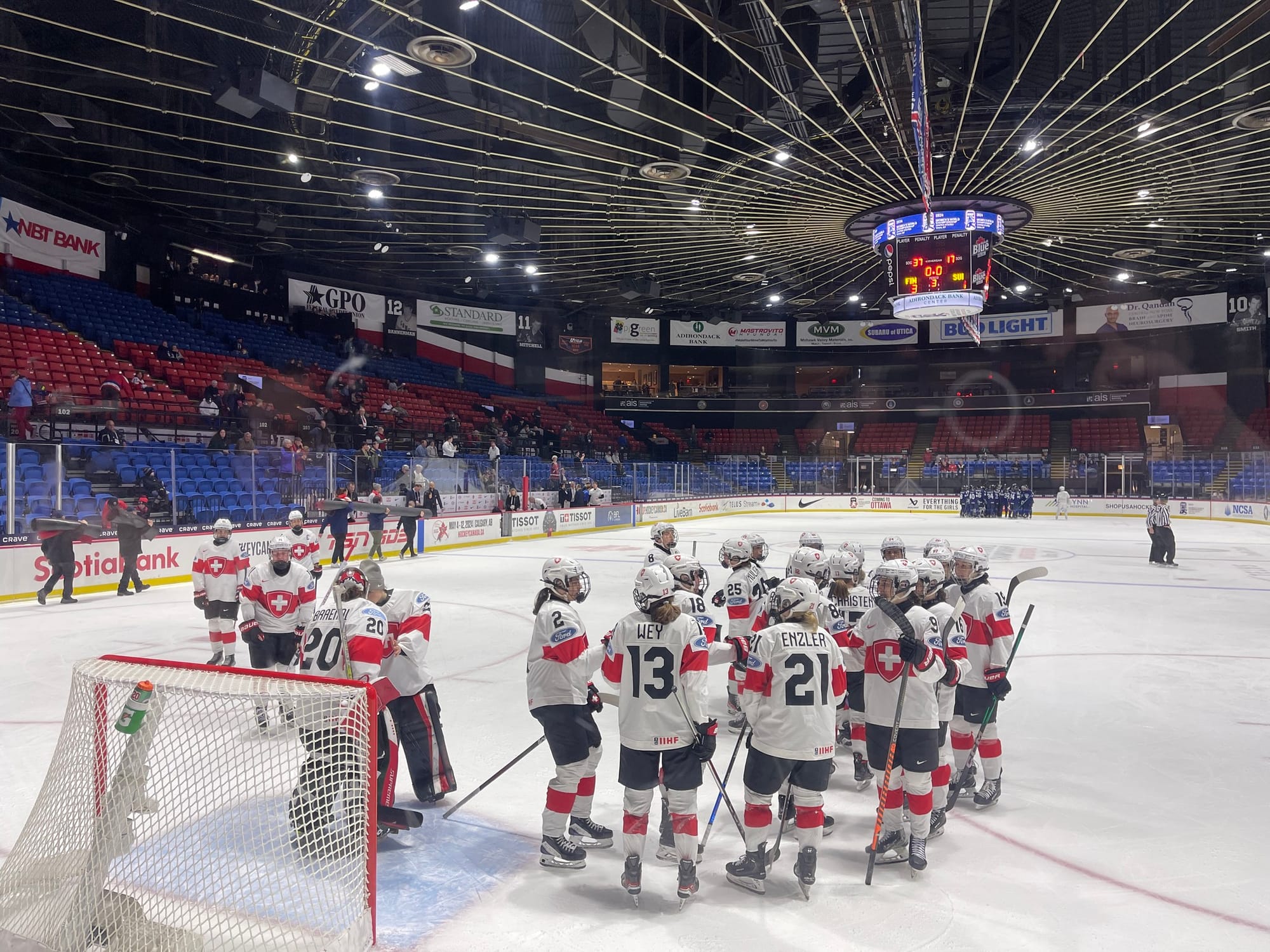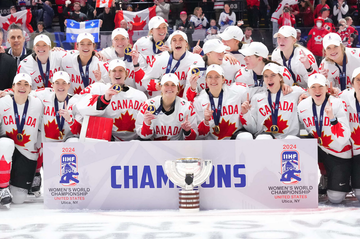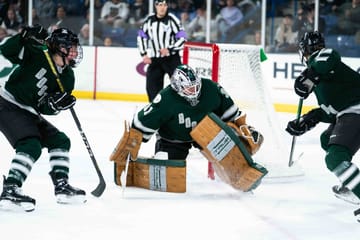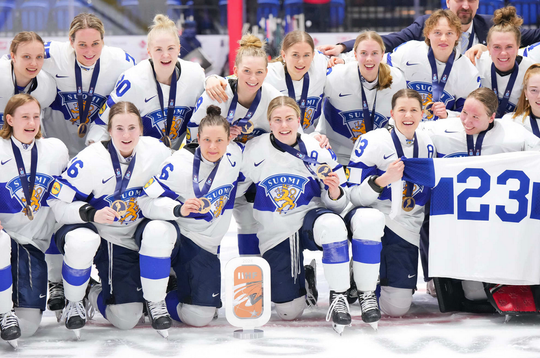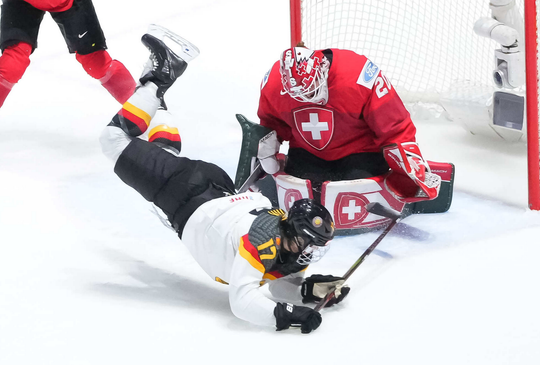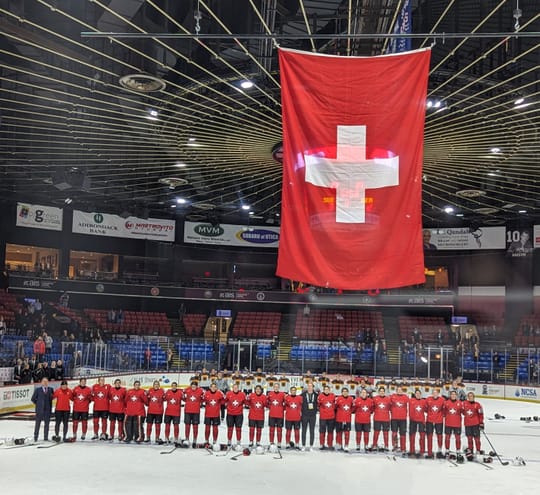With the 2024 IIHF Women's World Championships in the rearview, before we get too far removed, I wanted to share a few additional thoughts on the tournament and my experience covering it.
Standout players
- United States F Laila Edwards had an incredible tournament, with six goals and two assists for eight points in seven games. That's pretty damn good for her first senior Worlds tournament, and it's a special treat to realize she's only just finished her sophomore season at Wisconsin.
- There's a reason I voted for Canada D Renata Fast as one of my Media All-Stars. Multiple reasons, in fact. She led Canada with six points in seven games, but it's also impressive how easy she made it look while handling a heavy workload – averaging 23:08 per game.
- Czechia F Natálie Mlýnková was impressive, with six points in seven games across the tournament. We'll have to see what the future holds for her, but it'd be great to see her compete in the PWHL someday.
- It's clear how much Switzerland D Lara Christen means to the national team, and how much her country means to her. She led all skaters in ice time during the tournament, averaging 27:17 and had three goals.
Goaltenders!
It was absolutely unreal to see so many high-level goaltenders over the course of a few days. Ann-Renée Desbiens, Emerance Maschmeyer, Emma Söderberg, Sandra Abstreiter, Andrea Brändli, Aerin Frankel, Klára Peslarová, Sanni Ahola... what a list. Peslarová's 46-save performance against Finland and 43-save effort against Canada were spectacular. Ahola's 50-save game against the United States was unreal, as was Söderberg's 39-save effort against Canada.
The experience in Utica was, by and large, an incredible one.
This was my first time covering Worlds, and I'm so grateful that I got the opportunity. To be able to watch some of the highest level of international hockey, and then to be able to speak to both players and coaches from every team, was truly an honor, and I won't take the experience or access we got for granted.
I was a bit surprised and disappointed to see how small the crowds were for the quarterfinal & semifinal games that didn't include the United States. While I expected a small crowd for some games, I thought the Canada games would be more packed. After all, this is Team Canada we're talking about! I spoke to a few other folks and they agreed that the United States games were by far the best-attended throughout the tournament. It makes sense, given the New York location, but I was hoping the other games would be a bit busier.
With that said, Pat Kelleher, executive director of USA Hockey, said this will be the most successful World Championships in history in the United States. Over 70,000 people attended the tournament in total, and it's clear that the tournament had an economic impact on the city of Utica, too.
The atmosphere for the gold medal game was awesome. The rink was fully sold out, including 200 additional standing room tickets. It was probably about 70/30 USA to Canada fans. The chants were loud. The intermission sing-along to songs like John Denver's "Take Me Home, Country Roads" were absolute classics. It was also great to see how many people stayed for the entire medal ceremony; I've been to an international tournament before where, because the 'home' team lost, most of the fans jetted out the exits.
After attending a very small part of this two-week tournament, and listening to folks like Robert Esche (who was a key part of getting it to Utica), Pat Kelleher (from USA Hockey) and Luc Tardif (of the IIHF) speak, you realize just how much work goes into something like this. It's no small feat.
From a media point of view...
I was generally really pleased with things from a media standpoint. It was a bit weird to have the media area on the 'stage' end of the arena, which meant that the visuals of the other end of the ice were a bit difficult. Being so low also meant being super close to the action, which is exciting but also means you can't see plays develop as well as if you're seated higher up. The stage area seating also meant there wasn't really a restroom close by. We did have the flexibility to sit in the stands if we wanted to (as long as there were open seats), and I took advantage for a period here and there. The WiFi was also hit-or-miss at times, which was frustrating, but for the most part, we made it work.
I've never been part of a mixed zone for interviews before, but once I got the hang of how things were done, it was simple enough. I really appreciated how much access we were given; pretty much any player we asked for, we got. Coaches spoke extensively when asked. For the most part, players came out to speak within a reasonable time after their game had ended, which was good since there was almost always another game coming up afterwards.
On the game presentation...
First things first: we need to do better with getting the pronunciation correct for players' names. Thank goodness I don't have to listen to the in-arena public address announcer butcher Ann-Renée Desbiens' name anymore, because it was rough. Players deserve to have their names pronounced correctly. If you aren't sure how to say it, ask someone. A phonetic pronunciation guide should be available. Elite Prospects also has a feature where you can listen to a native speaker of a players' language say their name. It shouldn't be so hard to get this right.
Since I both work in game presentation (in men's college hockey) and my husband is a big game presentation nerd, I pay attention to a lot of the little details that other people might miss. The warm-up music mix was the same for most games. Even a lot of the music between games was on repeat. If you're only attending one game, you would never know; but if you're in there for four games in one day, you'll notice when the same music is played over and over again.
And the fan experience...
From everything I've heard, the fan experience was generally a good one. Because the games were stacked pretty close together, there was sometimes a delay for fans to get back into the arena. (Fans had to leave after every game, go outside & go back through security to return.) Although fans are supposed to get in 60 minutes before puck drop, that didn't always happen. It also meant that fans were sometimes stuck in long lines, outside in the pouring rain.
Also: can we please properly anticipate the demand for merchandise for women's sports? The first time I went into the merch shop, they had very little product because they'd already sold out of a number of items & were waiting for another shipment. Once that came in, it was great, but then the lines for the store were really long at times, especially during the USA games. It was a small store, so only a few people were being let in at once, and it got pretty backed up. That said, it's awesome to see people want the merch so much!
It was great to see a so much support for women's hockey.
Among the array of national team jerseys and college jerseys, I also noticed a fair bit of pro women's hockey merchandise at the tournament being worn by fans, including PWHL Ottawa, Toronto & Montreal; and former PHF teams such as the Boston Pride, Buffalo Beauts, Connecticut Whale and Metropolitan Riveters.
Now, the majority of the US and Canadian national teams, along with a few other players, are back with their respective PWHL teams. It'll be interesting to see how their return to game action after a grueling two weeks goes; it's a lot of hockey to be played in a short time, and there hasn't historically still been a pro women's season to finish after the IIHF Women's Worlds.
With that said, it sounds like the IIHF and PWHL are hoping to work something out to avoid this happening again in the future, which could mean moving up the PWHL schedule or pushing Worlds back (which might help with synchronizing the top-level and lower-division tournaments). It's very interesting to consider the dynamic between the PWHL as a North American pro league and the IIHF as the international governing body of ice hockey – we'll see what changes might happen down the line.
(Photo: Melissa Burgess)
